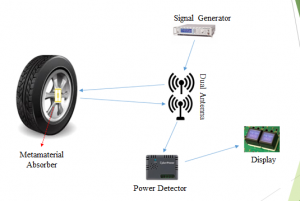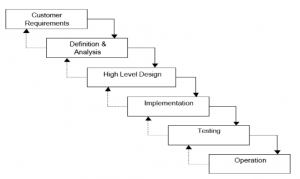Projects:2015s1-28 Wireless Rotation Detector
Contents
Supervisors
Honours students
- 2015: Guowei Deng and Shuopeng Wang, see Wireless Rotation Detector
Project objects
Scope
- Design and construct a portable wireless device which can accurately measure the speed of rotating object.
Specific Aims
- Design and produce a metamaterial absorber with resonate frequency of 2.4GHz.
- Design and fabricate a planar dual-antenna which can transmit and receive signals with limited crosstalk.
- Design a software system which can calculate the rotation speed.
Background & Significance
- Rotation speed measurement devices widely used in industries.
- Current popular rotation speed measurement devices, such as laser tachometer, use visible light.
- Can not use if line of sight blocked.
- Intend to change – use Electromagnetic Wave instead
Key Requirements
- Metamaterial Absorber shall absorb at least 90% (-10db) power at 2.4GHz when it has same polarization with antenna.
- Dual antennas shall work at 2.4GHz and the crosstalk between 2 antennas shall be less than -40dB.
- Portable system shall be operational up to 50cm from the rotating object.
- Portable system shall accurately measure the rotating object in both low and high speed.
Proposed Approaches
- Method exploited - ‘Divide-And-Conquer’.
- The entire project can be decomposed into several aspects.
- Hardware (design required)
- Metamaterial Absorber
- Dual-Antennas
- Software
- Calculation Algorithm for rotating speed
- GUI
- Other Components (from market or school)
- VCO
- Arduino UNO Board
- Power Detector
Hardware Design
- Understand the requirements and specifications of the hardware
- Design the hardware in software such as HFSS
- Fabricate the designed hardware
- Measure the prototype and compare the measured results with simulation results
- Redesign if the prototype does not meet requirements
Software Design
- Software design will start after antenna and absorber design has been finished.
- Software – in C language, based on the Fourier Transform
- Combine software, hardware and other components together and measure the rotating speed.
- Redesign if the measured speed and real speed are not identical.
Entire System
- The entire system is the integration of all several aspects.
- Use ‘Waterfall’ model for the system design.
Schedule and Milestone
- Milestone in Semester 1
- Milestone in Semester 2
Reference
[1] C.A Balanis, “Antenna Theory Analysis and Design”, 3rd ed., New York: Wiley, 2005. [2] “Arduino FFT Library”, openmusiclabs, Available: http://wiki.openmusiclabs.com/wiki/ArduinoFFT. [3] D. Schurig, J.J. Mock, and D. R. Smith, “Electric-filed-coupled resonators for negative permittivity metamaterials”, Appl. Phys. Lett. 88, art. no. 041109(2006). [4] Y. Chen, “Wireless Rotation Detector for Sport Equipment”, 2014. [5] T. Mark, “System Overview,” Wireless Rotation Detector for Sport Equipment, 2014, pp 6-8. [6] H. M. Lee, “Absorption Bandwidth-Enhanced Metamaterial absorber Using In-planed ELC resonator and Cut-Wire,” available: http://ournal.sapub.org/eee [Accessed: 22 March 2015] [7] A. Grasso, Notes of Project Management for Electrical Engineering & Sustainable Energy, 2014. [Online]. Available: https://myuni.adelaide.edu.au/bbcswebdav/pid-5997024-dt-content-rid-6342045_1/courses/3420_ELEC_ENG_COMBINED_0001/Project%20Management%20%283024%20%26%203029%29%20Lecture%20Notes_2014.pdf




